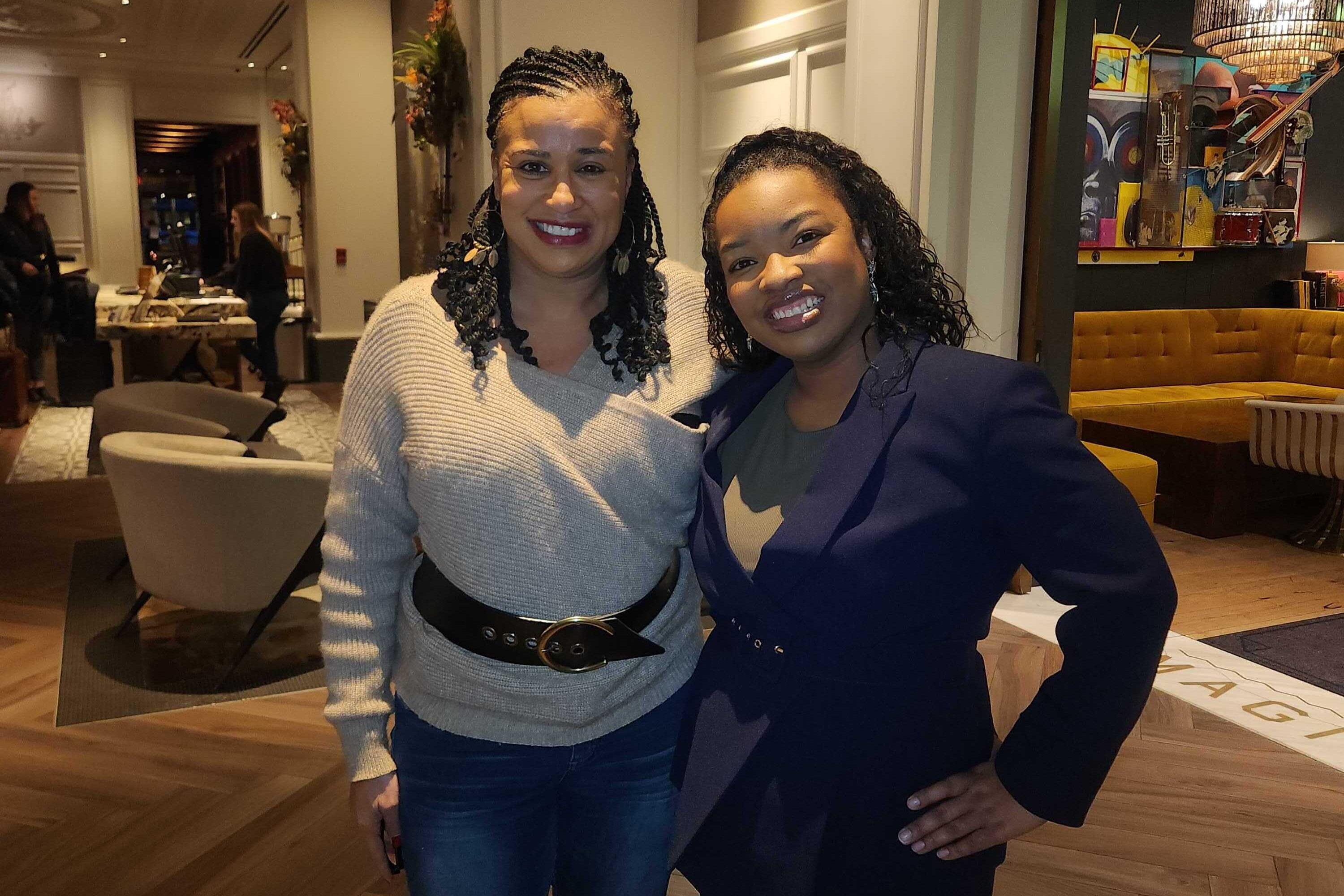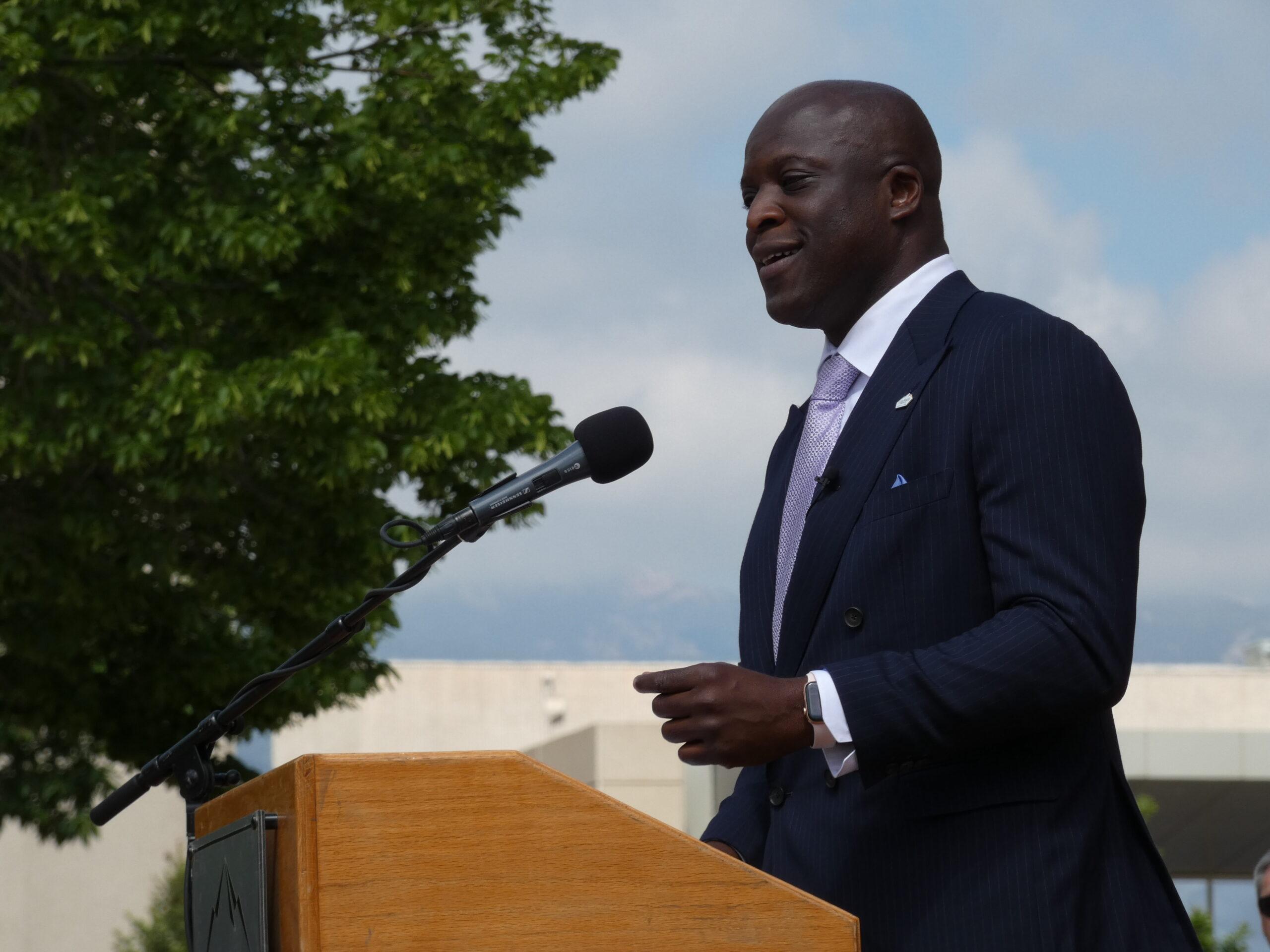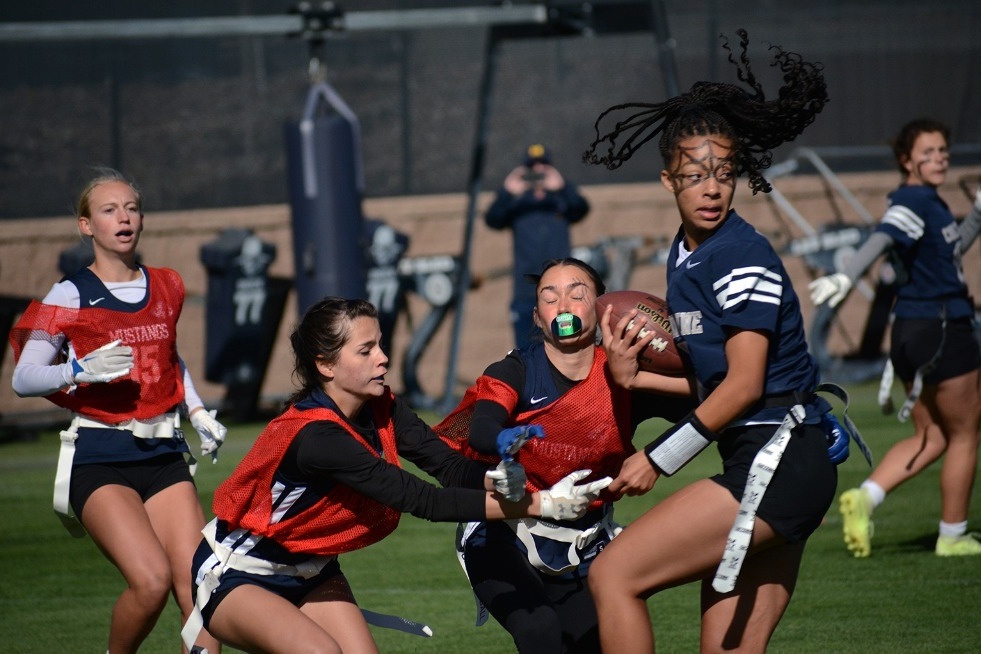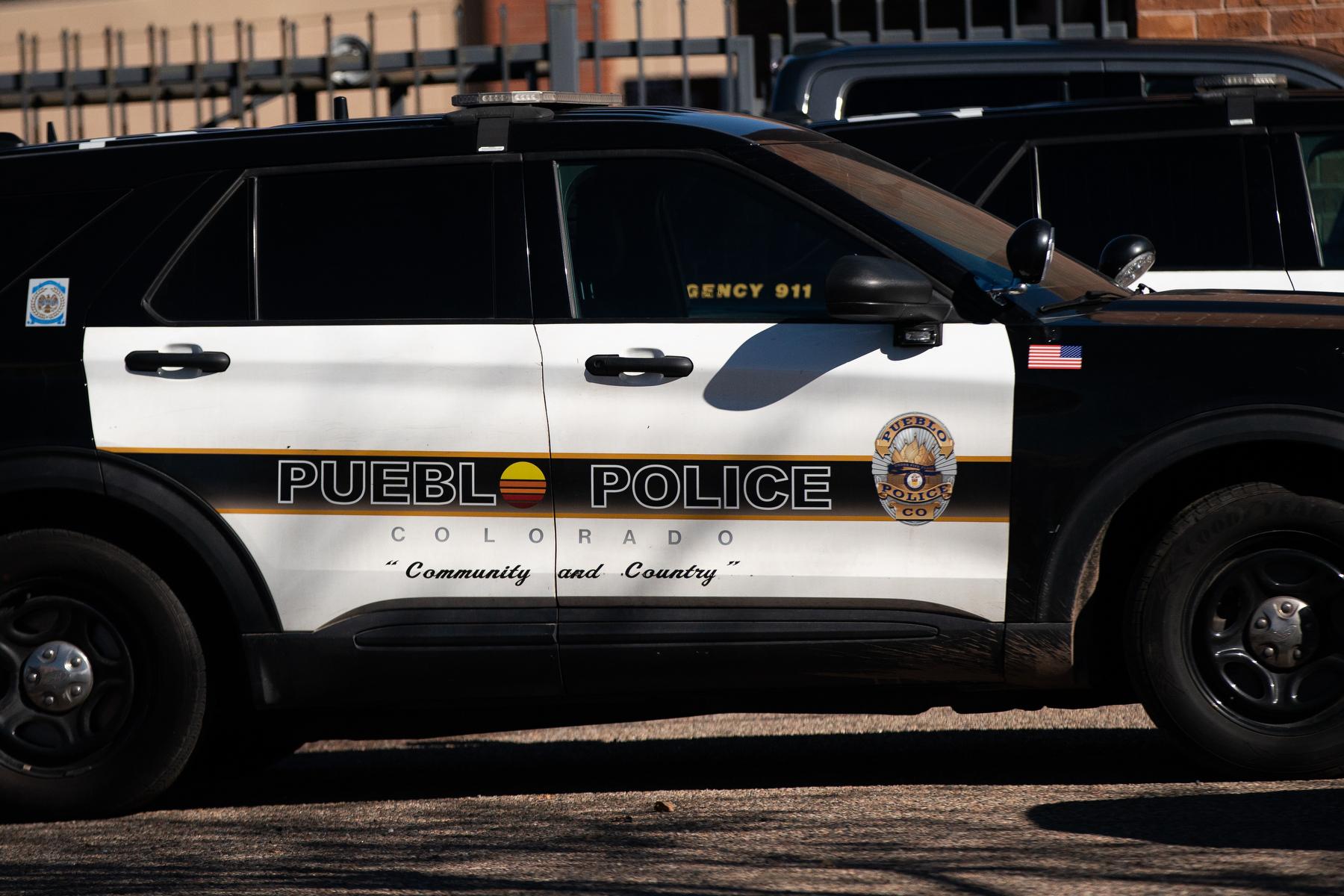
As students at the Florida high school where 17 people were shot and killed last week mourn the dead and start organizing a national rally to push for more gun control, we’re reminded that Colorado is well acquainted school shootings.
On April 20, 1999, 13 people were shot and killed at Columbine High School. Then in 2013, a shooting at Arapahoe High School left two dead, including the shooter. The Arapahoe incident exposed a glaring problem: information about students who might pose a risk wasn't getting shared. The result was a new state law to hold schools liable for missing warning signs.
Have things really changed at Colorado schools? To find out, we spoke with Bill Woodward, a former police officer now with the University of Colorado, who trains schools on how to prevent violence.
He was part of the team that evaluated what happened at Arapahoe High School, when Claire Davis died four years ago. Her father, Michael Davis, said the evaluations that were done were his "gift" to the state — so people could learn from the tragedy.
"This process is no longer about our precious daughter Claire, nor is it about [shooter] Karl Pierson, who was a teenager in crisis who we believe would have made very different choices if a helping hand had reached out from a system that was designed to not miss the opportunities to help him," Michael Davis said. "This process is now about the next student in crisis who is on the brink of hurting themselves or others."
Woodward said one challenge today is that the culture of a school is to help kids, but people need to understand they have to be skeptical about what a kid tells them.
The other big challenge is sharing information. Woodward spoke with 20 schools last fall and they all described problems with sharing information.
Schools are having a hard time complying with the Claire Davis Act, in part because there's no real definition of what it takes to provide "reasonable care" to avoid a murder or an assault. Woodward said the numbers of threat assessments are going up, which means schools are less likely to be liable in a Claire Davis situation. The law is making them take action.
Read The Transcript
Andrea Dukakis: This is Colorado Matters from CPR News. I’m Andrea Dukakis. Students at the Florida high school where seventeen people were killed last week are organizing a rally to push for more gun control. Colorado’s no stranger to school shooting. Of course, there was Columbine. Then in 2013, a shooting at Arapahoe High School, just utside of Denver, exposed a glaring problem: that information about students who might pose a risk wasn’t getting shared. The result was a new state law to hold schools liable for missing warning signs, but have things really changed at Colorado schools? Bill Woodward is a former police officer now with CU who trains schools on how to prevent violence. Bill, welcome to the program. Bill Woodward: Thank you. AD: You were part of the team that evaluated what happened at Arapahoe High School when Claire Davis died four years ago. Her father, Michael Davis, said the evaluations that were done were his gift to the state so people could learn more from the tragedy. Voice of Michael Davis: This process is no longer about our precious daughter, Claire, nor is it about Karl Pierson, who was a teenager in crisis, who we believe would have made very different choices if a helping hand had reached out from a system that was designed to not miss the opportunities to help him. This process is now about the next student in crisis who’s on the brink of hurting themselves or others. AD: I want to stress that you’re working with dozens of schools. I don’t want to just focus on Arapahoe High School, but the fundamental question is in the schools you work with, are they now better prepared to deal with a situation like what happened to Claire Davis? BW: I certainly think they are and I’m really doing this interview at the – to honor Claire Davis. This is what she and her family would have wanted to have happen; that we learn. And so I do think schools are getting more and more prepared. In fact, we’re working with forty-four schools right now through our Safe Community Safe School program to help them better prepare for these kinds of situations. AD: What’s the biggest barrier you’ve seen to being able to recognize and deal with potential threats out there? BW: Well I think the biggest barrier is the climate of the school because I think sometimes schools are just thinking in terms of working with students, helping students out and sometimes when you’re looking at someone who’s made a threat, you have to change to the Secret Service model, which says you need to be inquisitive and very investigative and skeptical in your information gathering. AD: In Florida, there were warning signs and a big issue in Colorado was communication; staff and teachers being afraid to share what they knew or fearing the school would look vulnerable if they did. Is that still an issue in Colorado? BW: Oh, absolutely. I think there’s always been trying – there’s that huge balance of trying to make sure that people share the information but also keep student information confidential, but the attorney general has really done a wonderful job of putting out an opinion now that reminds schools that for safety – public safety matters, that they have a – almost a duty to share that information and that that sharing of information is going to be critical to keeping a school safe. AD: And what do you tell schools? How do you help them communicate better? BW: I think the biggest thing about our Safe Community Safe School program is that it builds on what we call “adaptive leadership” and that’s as opposed to technical leadership where you just say, “Well, this is a problem.” Like if you were at a doctor and the doctor said, “Well, you have high blood pressure,” and gave you a pill, that would be a technical solution. The adaptive solution to that would be that, “Well let’s look at your exercise program and what you eat, and what is your diet and what is your stress level?” So too, schools are also being trained in Safe Community Safe School project to do an adaptive look at what’s going on in a school. All facets of that organization and structure need to play a role in keeping the school safe. AD: The new law that went into effect, the Claire Davis Act, increases liability for schools that miss threats. CPR News reported last summer that schools are having a hard time complying with this and that’s in part because there’s no real definition of what it takes to provide reasonable care required by the law, and that’s to avoid a murder or an assault. What’s your assessment of the difference, if any, that this law has made? BW: Oh, I think it’s made a huge difference. Before this and after Columbine, I can’t tell you how many schools didn’t even want to talk about this and didn’t want to spend the time to sort of figure it out, and while the law may seem a little heavy-handed, it has certainly gotten the attention of schools now, and now schools seem to be much more interested in figuring that stuff out. Yes, there are problems and those issues are going to have to be figured out, but now at least, there’s a real attentiveness to these issues of school safety. AD: How do they feel about the law in general? BW: Oh, I think they really hate it and they think that it was unfairly imposed on them, but I think it’s the only thing that got their attention. AD: So there’s been an increase in threat assessments. Do they have real value? Do you think it means schools are figuring out whether certain students could pose a danger and then doing something about it? BW: I think threat assessment is great when it’s done correctly. If you look at our report, that one was not done correctly, but when done well, I think threat assessments really bring to bear either helping services for a student who may need a lot of assistance or if they’re a more serious kind of a threat, then bring around control processes to – external controls for that student so that they stay out of trouble and that you monitor them at all times. So that threat assessment tells you what of the – there are three typologies for shooters – which of the three typologies this person probably is and then based on that, helps you build a plan around that person, and I’d be real interested to see if that happened in Florida. AD: Can you give me an example of when you’ve seen these threat assessments work? BW: Oh, I think every day. I’ve said – and the ones in Jefferson County do a great job of very carefully – not only building a good threat assessment and being – having a skeptical information gathering attitude during a threat assessment, but then also building a vortex of information and a really good plan for managing that student who’s having those kinds of problems. Depending on the type of problems, building a plan that’s really tailored for that student. AD: What do you mean by “vortex”? BW: A vortex is just the place where all the information is gathered so that one person is aware of all the information about this particular student and then keeps track of that information, and if a red – another red flag emerges, then bring that student back in for another reassessment and look at that plan for that student and then adjust the plan as needed. AD: And yet the fear is that all of this could go too far and result in profiling kids. How do you avoid that kind of bias? BW: I agree. It’s possible for that to happen, but I think we under-profiled in the past and so I just think this is moving us toward a better balance, but we always have to be careful not to over-profile, otherwise it’s totally unfair to students. So – but at least it feels to me like we’re moving closer to the better balance. AD: This is Colorado Matters from CPR News. Bill Woodward is a former police officer who’s now with CU. He works with schools on how to prevent shootings like the one last week in Florida. And there were videos taken of students during the shooting in Florida. Some were begging for changes to gun laws as they were trapped inside the school, but with all the preparations in the world, can schools really do much to prevent this kind of violence or is this really about mental healthcare, gun laws, something else? BW: I think it’s a – again, it’s a combination of things. No one – there is no silver bullet, speaking metaphorically, but I think gun law changes may well be needed. I just think we have to do what we can do now and we can do things now, like our Safe Community Safe School project. We can make sure Safe2Tell gets well-trained in schools so kids know how to use anonymous reportings and we can – AD: Right. This is the program where students are asked to report these things and can be anonymous when they do that. BW: Exactly and that the information sharing is critical to that whole process of adaptive leadership. AD: The other important thing to note about Florida is the shooter wasn’t a current student and that raises questions about how he got in, whether things like metal detectors could have stopped him. Do you talk to schools about those kinds of measures and threats from people that are outside of the school community? BW: Right. That’s the purpose of the planning team that’s developed in the Safe Community Safe Schools project and other projects do the same thing. You have to have a team that works together to figure out all of those issues and the State Patrol has a critical infrastructure protection team that will come out and tell you about your infrastructure and score your school, and so that’s a wonderful resource we have here in Colorado. But then you have to look at surveys of the students and surveys of the staff, and looking at how Infinite Campus is handling information, and looking at all of the information you need to keep a school safe. It can’t be stovepiped and it can’t be sort of assigned to one person to do that. This is a team – teamwork that needs to occur. AD: What’s one thing you’ve learned from surveys in terms of how safe students and staff feel at school? BW: Well I think depending on the survey, we’ve seen in schools where teachers were totally unaware that some students had actually seen other students with guns on the way to or from schools, and so surveying kids and getting their input into this process is critically important to have those early red flags and to use those opportunities to get ahead of potential problems. AD: Just to wrap up here, how prevalent is the mindset still that it could never happen here, despite all the recent shootings? I wonder if you still run into that thinking. BW: Yes, we see that thinking all the time and I think it’s changing, but I do think people feel like it will never happen in their schools, that they have the perfect school and so it could never possibly happen. And so then, it is – when somebody has a red flag or somebody says, “Somebody’s got a gun,” or something like that, it’s not taken very seriously because if you believe it can’t happen there, then you sort of ignore those kinds – pieces of data. AD: Bill, thanks so much for being with us. BW: Thank you. AD: Bill Woodward is the Director of Training and Technical Assistance at CU Center for the Study and Prevention of Violence. He works with schools on how to prevent shootings like the one last week in Florida. This is Colorado Matters from CPR News. |









